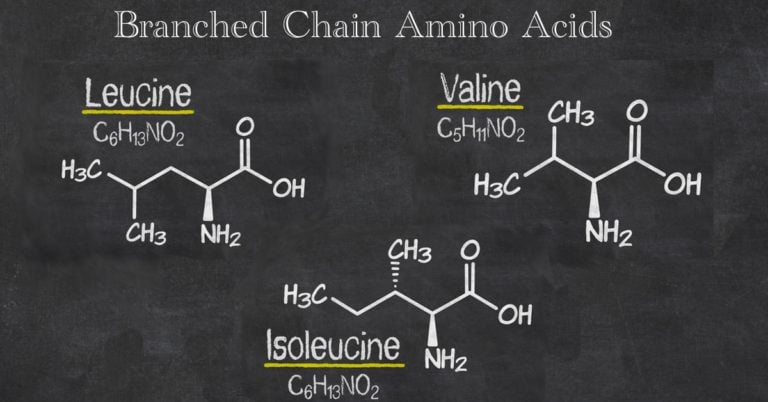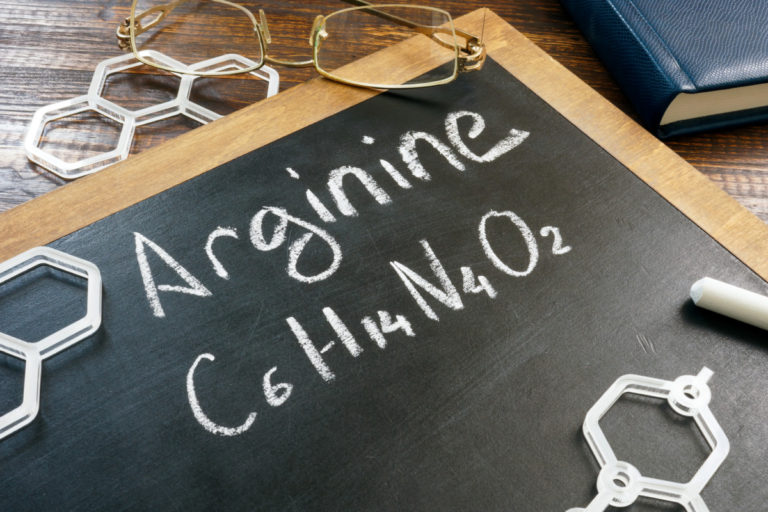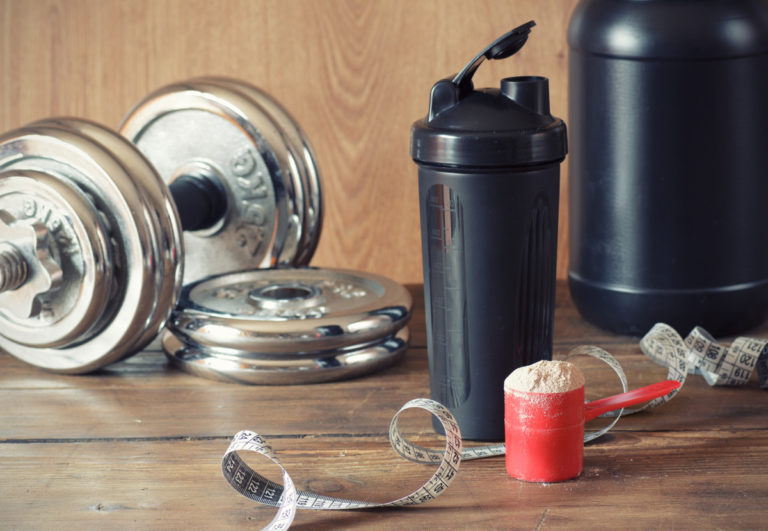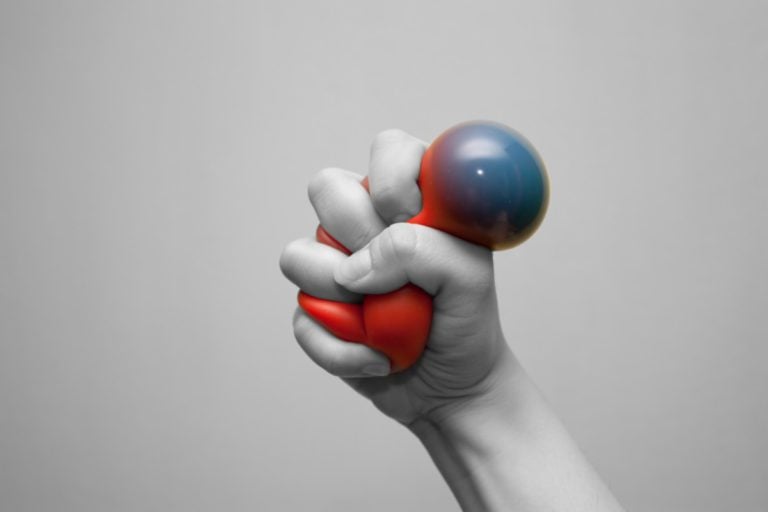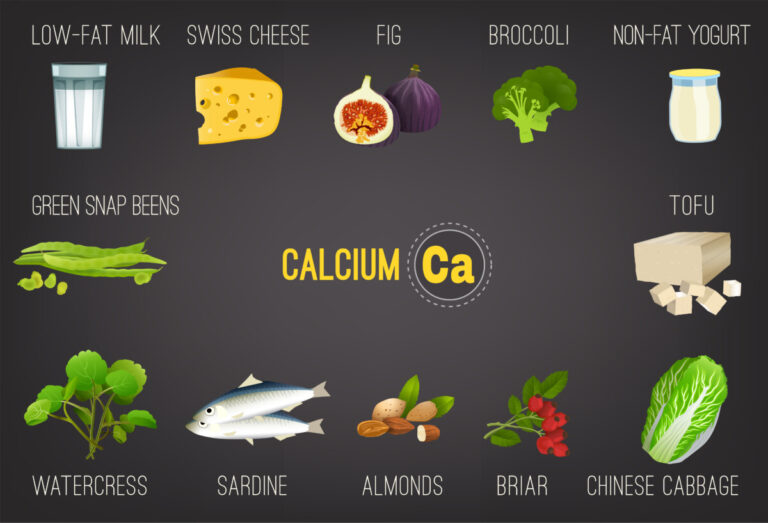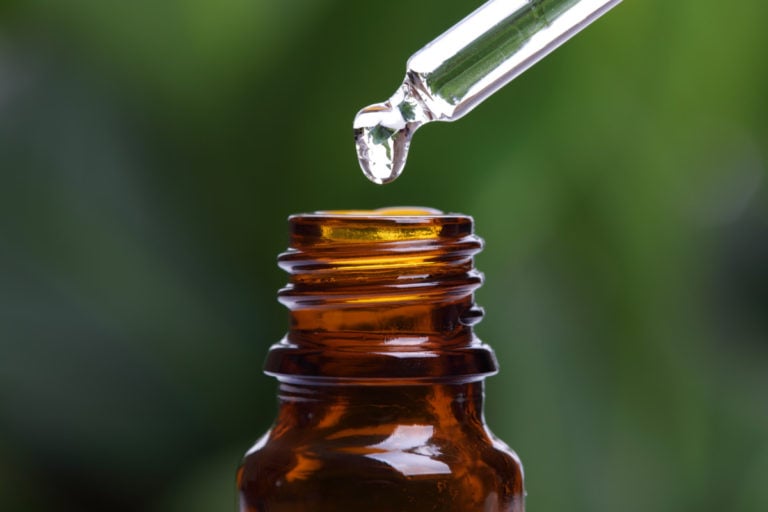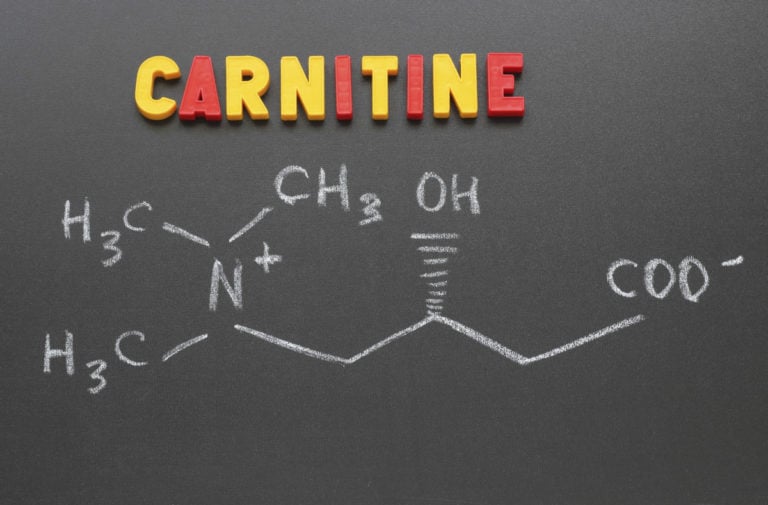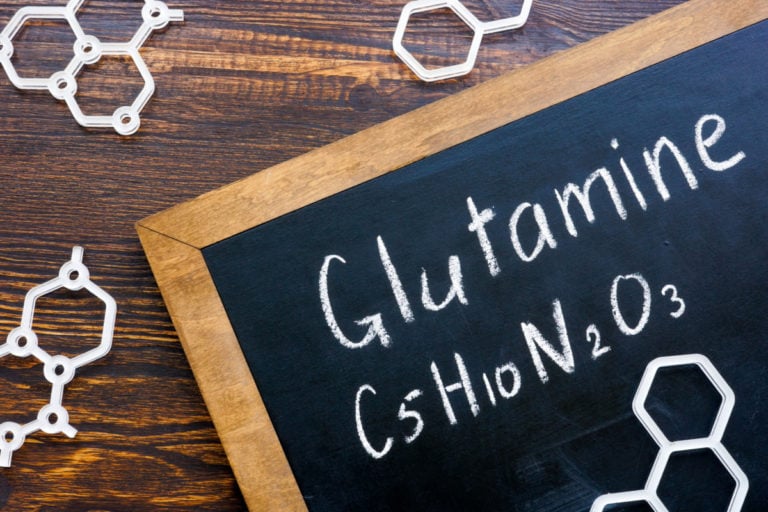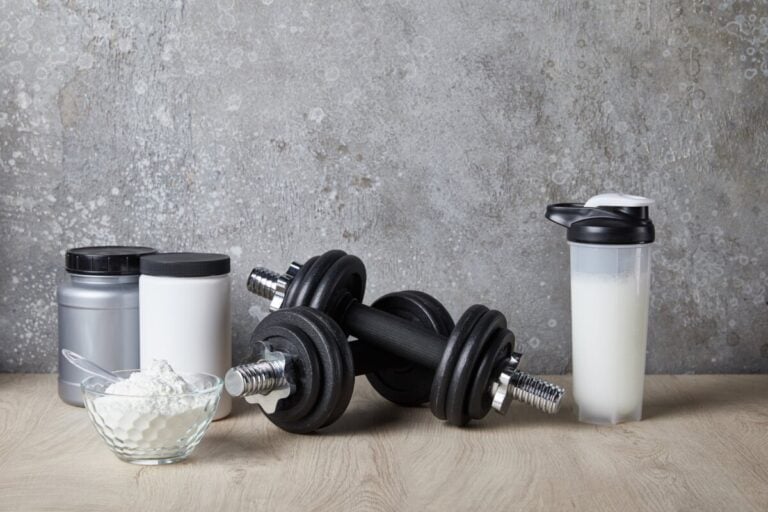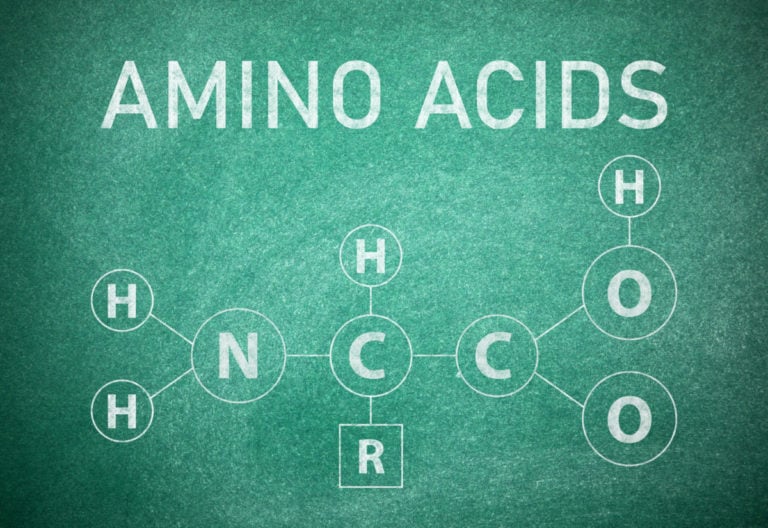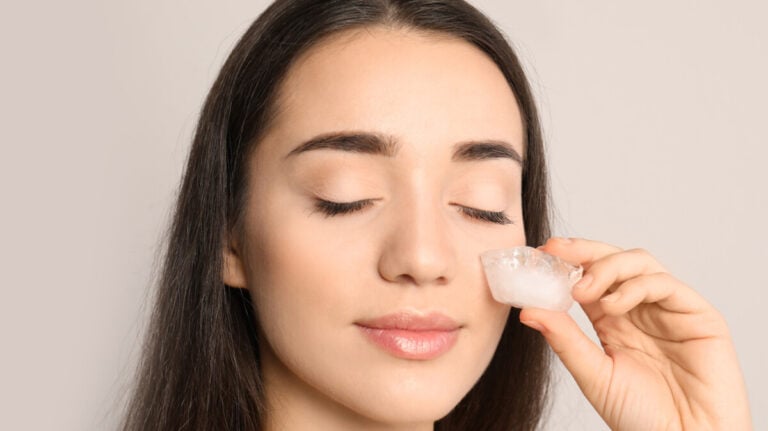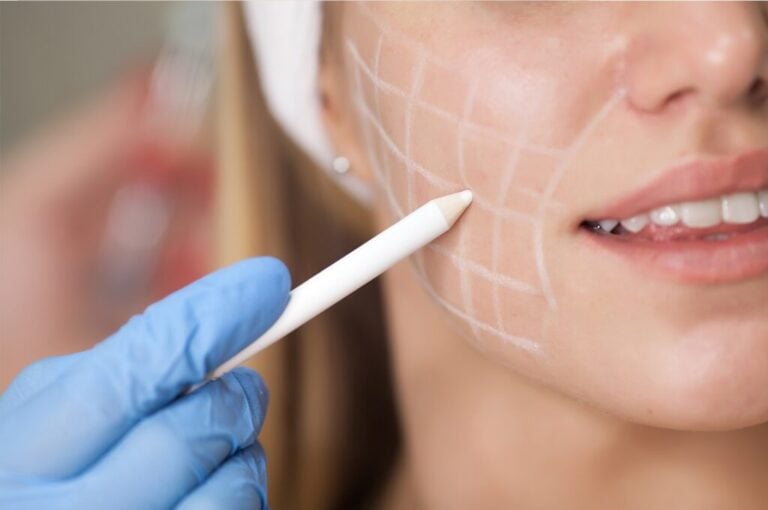Creatine refers to one of the 20 amino acids that are used in the “building” of protein. The substance has a simple structure, and its discovery dates back to 1835. The word “creatine” in Greek means “meat”.
The compound is indeed part of red meat, or rather, its muscle fibers. It is able to be synthesized in the body, but athletes actively introduce it into the diet in the form of a dietary supplement, which is necessary for muscle work.
Creatine synthesis
Having a simple formula (С4Н9N3O2), it is able to be produced in the body. Creatine is synthesized in the liver, pancreas and kidneys.
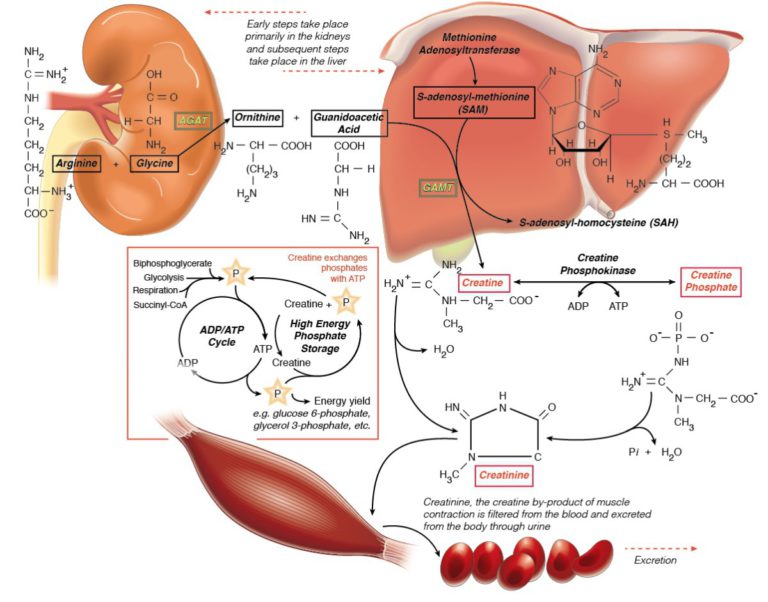
For its formation, 3 amino acids are needed: arginine, glycine, methionine. The formed compound enters the muscles through the bloodstream, where it is converted into creatine phosphate.
This is an intermediate substance in metabolic processes, which is used to restore ATP (“energy stations” of cells), producing additional energy for muscle tissue. During the training process, the amount of ATP is sharply reduced, then creatine comes to the rescue.
What gives additional creatine to an athlete if it is able to synthesize itself? The body forms up to 1% of this substance, which is extremely small. In meat, the content is also insignificant, and during heat treatment, it breaks down into the original amino acids. That is why people with high physical activity are forced to use dietary supplements.
Benefits of Creatine
In the sports world, no one wonders what creatine is for. It accumulates in the muscles and is involved in the following chemical processes:
- enhances the transport of cholesterol through the vessels;
- increases the rate of oxygen supply to the muscles;
- increases brain activity;
- “works” as an antioxidant;
- retains fluid in the body by binding it.

Creatine is used in sports nutrition to:
- gaining muscle mass;
- to increase the speed of metabolic processes;
- stamina increase;
- increasing strength indicators;
- more active contraction of the heart muscle.
There is still an active debate about what creatine is needed for in sports. On the one hand, it helps to build muscle mass. But there are also opponents of its use, who are trying to stay in certain weight categories.
Harm
Not only the benefits are known, but also the harm when taking creatine. The biological additive has a number of side effects on the body, but they are not irreversible processes and are observed only in 4% of athletes.
Possible negative consequences, harm from taking creatine:
- muscle water retention;
- dehydration or dehydration of the body as a whole;
- rarely – problems with the gastrointestinal tract;
- muscle spasms after heavy exertion;
- increased bone fragility;
- impaired kidney function, in rare cases, kidney failure.
Side effects from creatine are most often not related specifically to its intake and have an indirect effect, without causing pronounced harm to the body.
Views
Creatine is produced and sold in a pharmacy in 3 forms:
- solid in the form of chewing gum, effervescent tablets and capsules;
- liquid in the form of syrups;
- powder, which is convenient to dilute in juice or water.
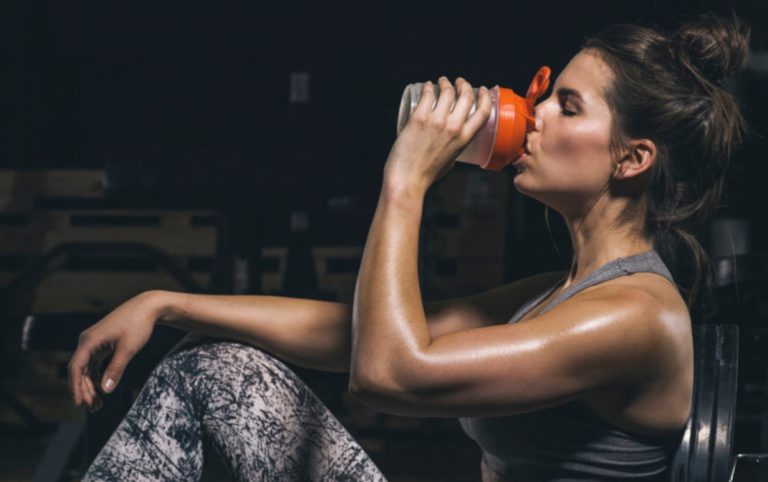
Sports nutrition stores stock 8 to 10 types of creatine supplements in different compounds. Types of creatine: creatine monohydrate, anhydrous, nitrate, hydrochloride, tartrate, phosphate, malate, krealkalin. When parsing: which creatine is better, it should be borne in mind that the substance in its pure form is active and interacts with air and moisture. That is why it is produced as part of compounds with an inert substance.
In the body, the amino acid is released and “goes to work.” Take drugs with creatine should be based on the instructions that come with the packaging. In order not to get confused by modern brands, you should start with the simplest and purest option: creatine monohydrate.
What is creatine for?
It leads to a set of muscle mass, increased strength and endurance, and is sold to bodybuilders as a single drug or in combination with other amino acids, which enhances its effect.
Creatine hydrochloride is well absorbed by the muscles and helps to quickly recover from workouts. It is distinguished by increased safety and the absence of side effects.
Companies producing dietary supplements in accordance with European standards L creatine are produced by sports nutrition companies:
- BPI Sports;
- Olimp;
- Optimum Nutrition;
- Biotech;
- Scitec Nutrition;
- Maxler;
- Ultimate nutrition.
These are brands that use modern raw materials and technologies, have rich experience. The production of dietary supplements is under constant quality control.
Where is creatine used?
A dietary supplement is known not only in sports, but is used in medicine and cosmetology.
Creatine for Muscle Gain
Leads to building muscle mass, increases endurance and creates an energy reserve in the muscles. This allows them to work longer and more efficiently.

By increasing the metabolic rate, there is an increase in working capacity and an increase in strength indicators. Helps to recover from exhausting physical exertion. Participates in the synthesis of the most important hormones: somatotropin and testosterone.
Creatine in medicine
The amino acid is used in rehabilitation therapy.
It is needed in the following situations:
- for the treatment of patients who have been immobile for a long time (muscular dystrophy therapy);
- in neurology in the treatment of Parkinson’s and Huntington’s diseases for the restoration of brain neurons;
- for depressive episodes, prolonged stressful situations, brain damage;
- in the treatment of type 2 diabetes.
In cosmetology
Participation in energy muscle metabolism allows you to use creatine to create creams, balms, masks. By acting on the subcutaneous muscles, it strengthens them, reducing the depth of wrinkles and correcting the oval of the face.
Particularly effective:
- for sunburn;
- microtrauma;
- for winter skin protection.
Creatine is used for hair, filling the porous areas of the hair and leveling the layer of scales when splitting. Masks with an amino acid in the composition give the strands elasticity and softness, natural shine.
How to take creatine?
Sports doctors recommend how to take creatine to gain muscle mass. A number of rules must be observed:
- Drink plenty of fluids. The amount of water can be calculated based on body weight. Approximate volume 2 – 4 l.
- Take creatine before and after training, twice a day.
- In rest mode, a single dose is sufficient.
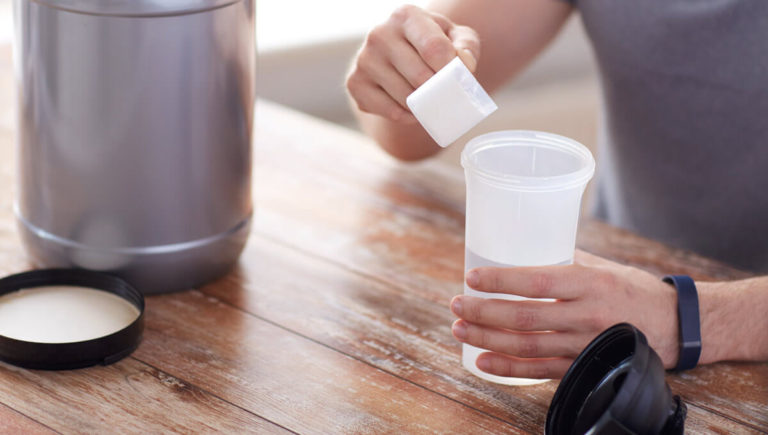
When and how is it better to take creatine for a quick result? The daily dose (3-5 g) should be consumed 4-5 times a day with food or a protein shake. Such a load is possible only for 5 days. Paradoxically, creatine is used for weight loss. Effective training and sports nutrition allow you to replace adipose tissue with protein. At the same time, a decrease in volumes with a slight loss of body weight is clearly visible.
Drying creatine is used in bodybuilding to create a pattern of relief muscles. How to take creatine monohydrate in powder is indicated in the instructions for dietary supplements. The powder is diluted with water, milk, juice and taken immediately after preparation, as the active ingredient quickly decomposes.
Creatine in products
In between taking dietary supplements with creatine in the composition, it is necessary to introduce foods rich in this compound into the diet.
All of them are of animal origin:
- seafood (herring, tuna, cod);
- red meat (beef and pork);
- milk and dairy products.
In plant foods, the amino acid content is minimal, so vegetarian athletes cannot do without dietary supplements. The question of the compatibility of coffee and creatine remains controversial. Scientists cannot come to a consensus, so athletes do not deny themselves coffee. And with regard to creatine and alcohol, there is complete incompatibility. Alcohol completely destroys the effect of taking dietary supplements.

